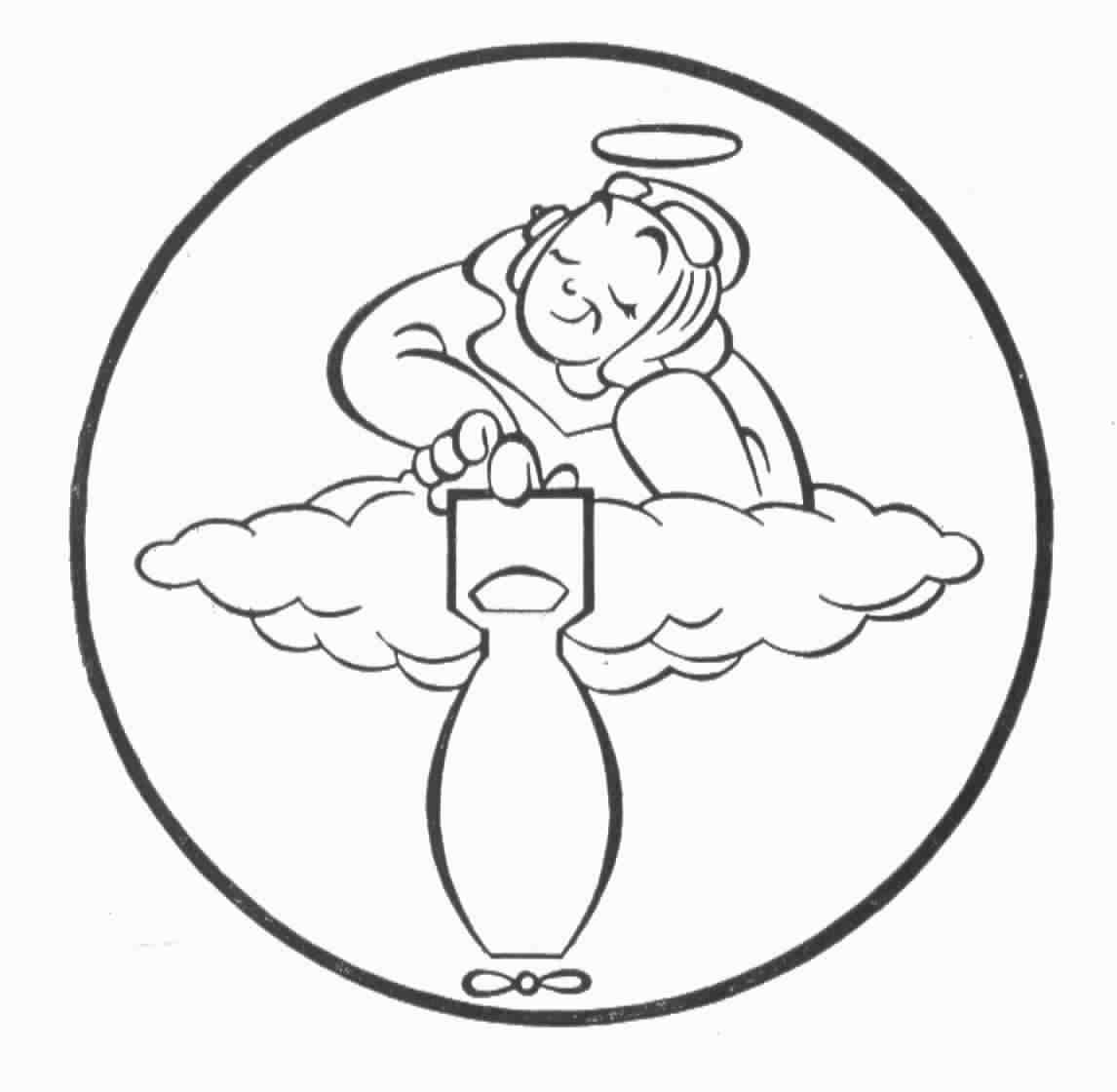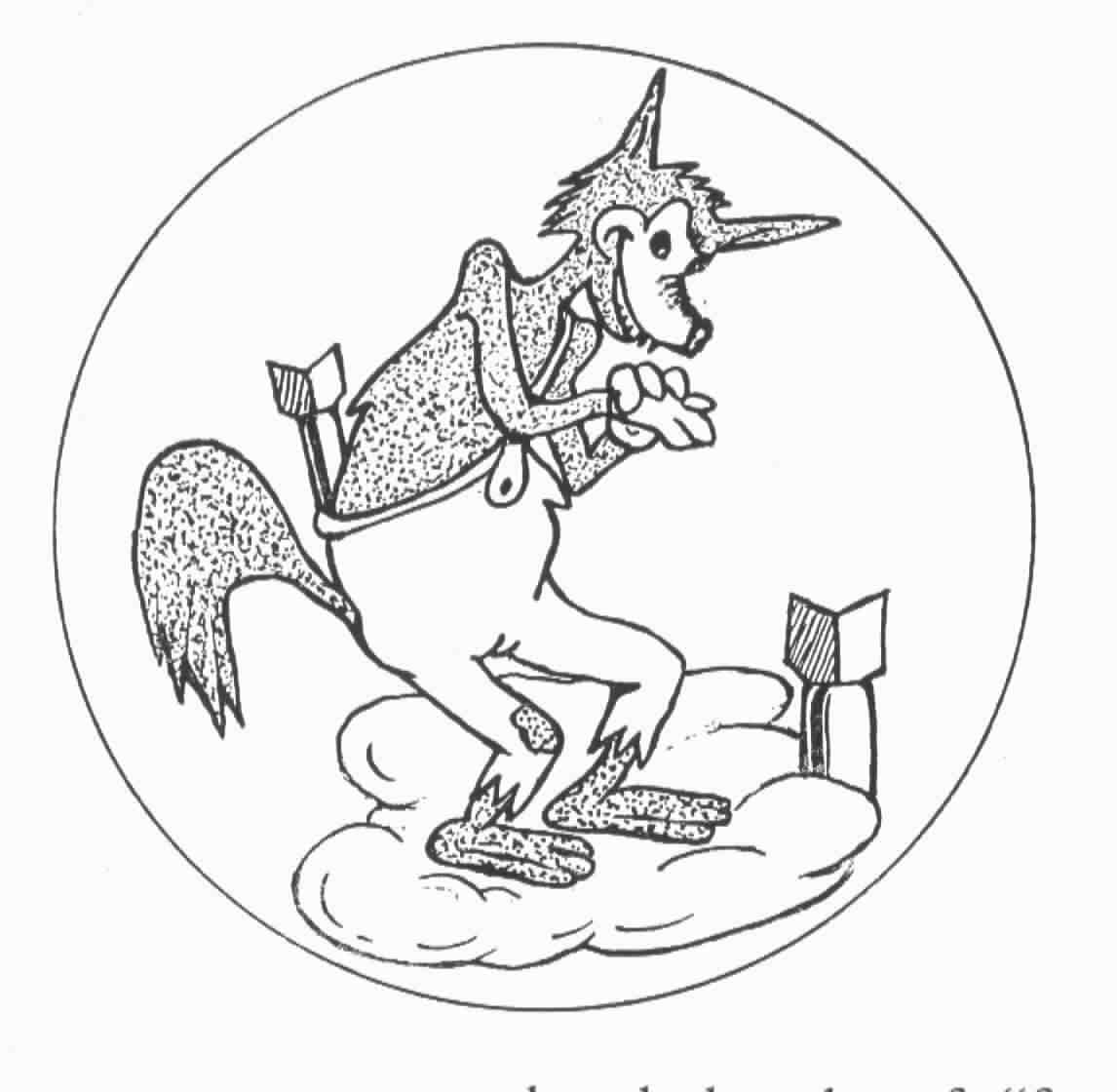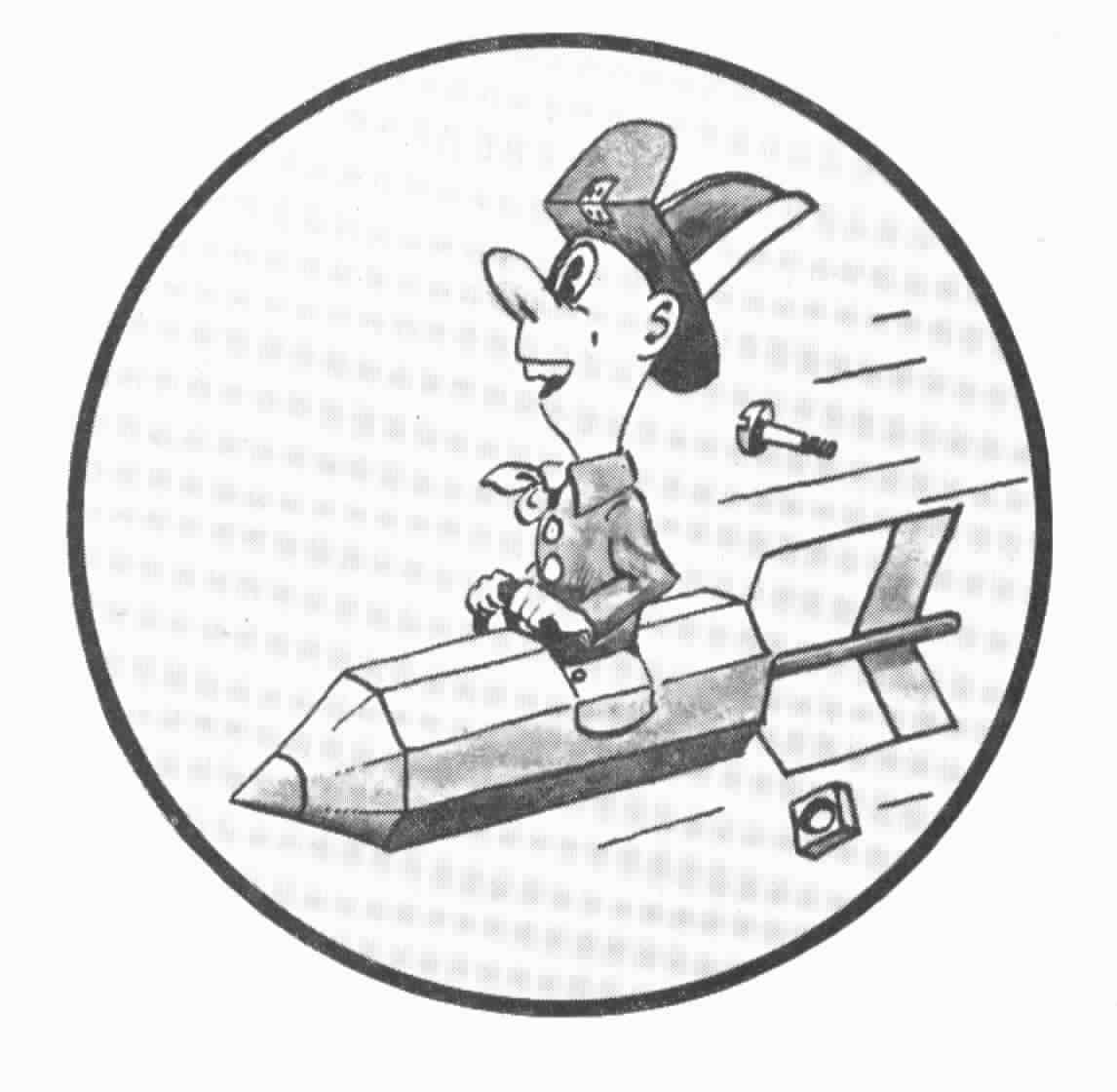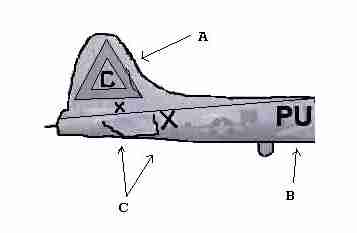



The 303rd Bomb Group, was part of the 8th Air Force,
which was one of about 15 Army Air Forces that functioned during
WWII. The 8th AF was the unit which flew out of England in the
European Theater of Operations. The 8th AF was made up of 4
divisions, and each division was generally made up of 3 Combat Bomb
Wings, and each combat wing was made up of 3 Bomb Groups (see a list of the various Bomb Groups, Wings and
Divisions). Each Bomb Group was located at a different air
base. The 303rd was located at Molesworth England.
The 303rd Bomb Group, like most 8th AF groups,
was made up, of 4 Bomb Squadrons.
 |
 |
 |
 |
| 358th Bomb Squadron | 359th Bomb Squadron | 360th Bomb Squadron | 427th Bomb Squadron |
Click for more info on 360thBS
303rd Bomb Group Aircraft identification.
The 303rd Bomb Group aircraft can be identified by a large
Triangle with a "C" in on the tail (see "A" below). The planes serial
number will usually be displayed below the triangle (not shown), with
the first digit omitted (for example, 44-8552 would have a 48552
beneath the triangle). Beneath the serial number is a
letter "Callsign" of the plane (see "C" below). Planes could have a
Callsign of any letter of the alphabet, except that later in the war,
the letters "X", "Y", and "Z" were reserved for lead PFF aircraft, ie
planes that have been equipped with ground sensing radar. About
half way up the fuselage, is a 2 letter code identifying the Bomb
Squadron (see "B" below).
 |
The 2 letter squadron identifiers for the 4 Bomb Squadrons
were :
| 358th | 359th | 360th | 427th |
| VK | BN | PU | GN |
Early in the war, the bomb group would fly a "Box" formation, usually containing 20 aircraft. Typically 2 squadrons would contribute 7 planes, one squadron would contribute 6 planes, and one squadron would rest. Early in the war, each squadron only had about 8 aircraft each, so when they flew, nearly the whole squadron flew. Later in the war, however, the squadrons grew in size, so that in May of 1944, instead of the Bomb Group putting up a single formation, it would put up 3 individual squadron formations on each mission. These squadron formations initially consisted of 12 aircraft and soon grew to 13 aircraft by August of 1944. Generally, 3 of the 4 Bomb Squadrons would populate one of these squadron formations, although very often they were mixtures of planes from 4 different squadrons. Each of the three squadron formations flew as an independent formation. See the description of these formations at the 303rdbga web page. In April of 1945, a new type formation was used, which consisted of 2 6-plane "V"s, followed by a single plane. The three squadron formations were very tight formations, with planes often separated by distances less than the wingspan, in order to provide more protection from attack by enemy fighters. The individual squadron formations were generally separated by 1000' of altitude , the first formation being the "lead" squadron, followed by a "high" and "low" squadron. Typical missions were flown around 26000' although some would be as high as 30,000', and some as low as 20,000'. Bomb Groups with B-24s generally flew 4000-5000 feet lower, since they were not capable of flying as high, although they could fly faster with a greater bomb load.
On a typical mission, the 1st Air Division would be sent to attack a target. The air division would send 4 combat wings, each of which consists of 3 bomb groups, and each bomb group consists of 3 13- plane squadron formations. This can total up to 4x3x3x13=468 aircraft. If more than one division is sent to a target, the number of planes can be considerably more, up to more than a thousand planes, each carrying about 12 500lb bombs. This is an incredible amount of explosive dropping on a single target.
When a target was attacked, the formations
would fly a non-direct route to the target, in order to avoid areas of
enemy defenses, and to disquise the identity of the target. The
planes would generally fly past the target to a point called the
"Initial Point", or IP, at which point, they would make a turn toward
the target. Often, the three squadrons in a group would turn at
slightly different points, and come in from slightly different angles,
to avoid congestion at the target. Ie the lead squadron might
turn at the IP, but the high squadron might turn 30 seconds later, and
the low squadron 30seconds later still. The final bomb run from
the IP would generally 7-10 minutes in length. Only the
bombardier in the lead plane in the squadron would be tracking the bomb
run. The other planes would be staying in close formation, and
when the lead plane released it's bombs, the other planes in the
squadron would also release.